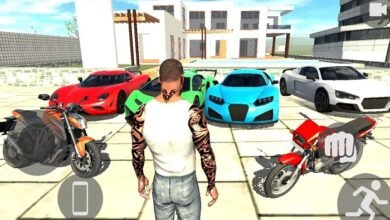
Exploring Pop Design: A Vibrant and Trendsetting Approach to Modern Art
Introduction
Pop design has emerged as a powerful force in the world of modern art and design. Rooted in the pop art movement, this style uses bold colors, commercial imagery, and playful elements to create visually stunning and culturally relevant designs. The term “pop design” evokes an aesthetic that blends popular culture with artistic expression, making it not just a visual statement but also a cultural commentary. Whether you’re designing a logo, interior spaces, or even websites, incorporating pop design elements can provide a sense of fun, vibrancy, and familiarity. In this article, we’ll delve into the essence of pop design, its origins, and its influence on contemporary art and design.
The Origins of Pop Design and Its Connection to Pop Art
Pop design is deeply rooted in the pop art movement of the mid-20th century. Pop art itself emerged in the 1950s and 1960s as a reaction against the traditional fine art establishment. Artists like Andy Warhol, Roy Lichtenstein, and Claes Oldenburg embraced everyday objects, advertising, and consumer culture as their subjects, and their works challenged the boundaries of what art could be. This led to the development of pop design, where graphic elements from advertising, comic books, and mass media began to be integrated into the design world.
The connection between pop design and pop art is clear—both celebrate consumerism and mass culture, while also highlighting the irony and playfulness inherent in modern life. By infusing these elements into design, pop design not only draws from the past but also evolves it into something contemporary, accessible, and engaging.
Key Characteristics of Pop Design
Pop design is characterized by its use of bold, bright colors, strong lines, and commercial imagery. One of its defining features is its connection to consumerism—using iconic symbols like brand logos, comic strips, and images from popular media. This creates an instantly recognizable aesthetic that resonates with a broad audience. Pop design often incorporates elements of graphic design, illustration, and typography to evoke a sense of nostalgia or familiarity.
A key element of pop design is its ability to blur the lines between fine art and mass production. It’s a design style that’s all about accessibility, which is why it’s often seen in everything from album covers to fashion lines and even corporate branding. The use of pop art icons and playful visuals makes it approachable and appealing to a wide range of demographics.
Pop Design in Interior Decoration
Pop design isn’t confined to the world of fine art or graphic design. Its influence has made its way into interior decoration, where it has brought vibrant color schemes and playful motifs to the forefront. Interior designers who embrace pop design often use bold colors like electric blue, neon pink, and bright yellow to create an exciting atmosphere. Furniture pieces might feature graphic prints or be inspired by pop culture icons, while wall art often includes references to famous pop art pieces or modern interpretations of consumer goods.
By integrating pop design into interior spaces, designers can create environments that feel youthful, energetic, and fun. Whether it’s a funky living room or a trendy café, pop design offers a unique way to infuse personality and style into any space. The use of oversized art, bold patterns, and iconic motifs makes the space feel alive and dynamic, ensuring that it leaves a lasting impression on anyone who enters.
Pop Design in Graphic and Digital Media
Pop design has found a natural home in graphic and digital media. Graphic designers love the bold visuals and playful spirit that pop design provides. Whether it’s for a website, advertisement, or social media campaign, the use of pop design elements can instantly catch the eye and communicate a message with clarity and impact.
In digital media, pop design has adapted to the online world with elements like GIFs, memes, and vibrant color palettes that dominate websites, apps, and social media platforms. Pop design creates an immediate connection with the viewer, making it perfect for advertisements and marketing campaigns aimed at younger audiences. The digital age has allowed pop design to evolve and reach new heights, allowing it to remain relevant in the ever-changing world of design.
How Pop Design Shapes Modern Fashion
Pop design has also made a significant impact on the fashion industry. From streetwear brands to high-end fashion labels, designers are incorporating pop design elements into their collections. T-shirts, jackets, and accessories adorned with graphic prints, logos, and vibrant colors are all part of the pop design influence.
Iconic fashion houses have collaborated with pop artists to create limited-edition collections, where elements of pop art and pop culture are infused with the latest trends. This fusion of art and fashion speaks to the growing desire for wearable art and expressive individuality. By blending pop design with fashion, brands create pieces that aren’t just clothing but statements of culture and style.
Pop Design in Branding and Marketing
Pop design has revolutionized branding and marketing, making it one of the most sought-after styles for businesses looking to connect with consumers. By using pop art-inspired visuals, bold typography, and recognizable symbols, companies can create a brand identity that resonates with the masses. Many well-known brands like Coca-Cola, McDonald’s, and Apple have successfully used elements of pop design in their advertising, creating campaigns that are both visually stunning and culturally relevant.
The ability of pop design to break down barriers and appeal to diverse audiences makes it an effective tool for marketers. By embracing pop culture and incorporating playful, eye-catching visuals, businesses can ensure that their brand stands out and becomes memorable to their target audience.
The Future of Pop Design: A Dynamic, Evolving Art Form
As we move further into the 21st century, pop design continues to evolve, driven by new technologies and cultural shifts. In the future, we can expect to see even more hybrid designs that combine pop art with other artistic movements, such as street art, digital art, and minimalist design. The world of pop design is constantly evolving, adapting to new mediums and new forms of expression.
Pop design’s ability to stay relevant across various industries—whether in art, fashion, graphic design, or interior decoration—demonstrates its enduring appeal. It remains a versatile and exciting tool for designers, providing a creative platform for innovation and expression. The future of pop design will undoubtedly continue to be vibrant, dynamic, and ever-changing, as it adapts to the cultural trends and technologies of tomorrow.
Conclusion
Pop design is a reflection of the colorful, dynamic, and often playful aspects of contemporary culture. From its roots in pop art to its widespread influence across various design fields, pop design has established itself as a significant force in modern art and aesthetics. Whether through interior design, graphic design, fashion, or branding, pop design continues to captivate and inspire audiences around the world. Its ability to blend nostalgia with modernity, as well as its emphasis on bold visual language, makes it a style that is both timeless and ever-evolving. As it continues to adapt to the changing times, pop design will undoubtedly remain a dominant and influential design style for years to come.
FAQs
-
What is the difference between pop design and pop art? Pop design is a visual design style influenced by the pop art movement. While pop art is an artistic movement that uses mass media and consumer culture, pop design takes these elements and applies them to practical design fields like graphic design, fashion, and interior decoration.
-
Can pop design be used in corporate branding? Yes, pop design is widely used in corporate branding. Many brands incorporate bold colors, graphic elements, and pop culture references to create memorable and engaging brand identities.
-
What are some key elements of pop design? Key elements of pop design include bold and bright colors, graphic patterns, commercial imagery, recognizable symbols, and a playful aesthetic.
-
Is pop design only for young audiences? While pop design is often associated with youth culture, its appeal spans all ages. Its bold, vibrant visuals and playful nature can resonate with people of various demographics.
-
How does pop design influence modern fashion? Pop design has heavily influenced fashion by incorporating graphic prints, logos, and vibrant colors into clothing and accessories. Designers often use pop design to make bold fashion statements and connect with contemporary cultural trends.




